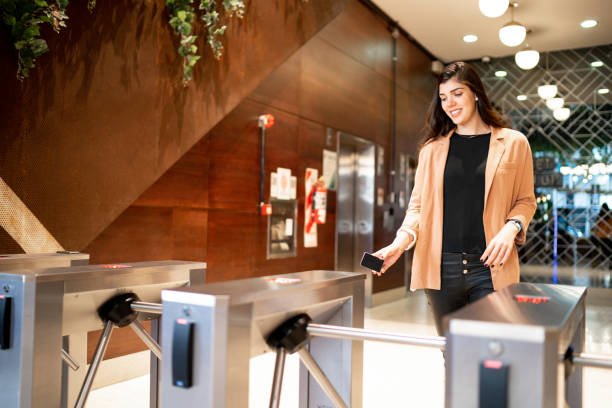Executives’ safety and security now take front stage in the hectic corporate scene of today. Close protection services offer a customised method to guarantee the security of well-known people. Emphasising the need of corporate security, this paper describes basic techniques for applying efficient close protection policies for CEOs.
Understanding Close Protection
What is Close Protection?
Close protection (CP) is the security actions used to guard people against possible injury and physical threats. Executives, celebrities, and high-net-worth people who might be at risk because of their position, money, or public exposure often use this service. Under close protection, one employs a variety of techniques including crisis management, risk assessment, and physical security.
Why is Close Protection Important for Executives?
Executives deal with particular difficulties that call for strong security policies. Some justifications for using close protection consist in:
- Executives deal with sensitive material and make high-stakes decisions, hence they are targeted for hazards ranging from harassment to kidnapping.
- Executives should be in a protective presence since more exposure can attract unwelcome scrutiny.
- Regular business travel exposes CEOs to several security concerns, hence preventative actions for safety are quite important.
Important Techniques for Enhanced Protection
1. Comprehensive Risk Assessment
Any good close protection plan starts with a comprehensive risk assessment. This covers:
- Recognising the possible hazards particular to the executive’s profile—personal, occupational, and environmental ones—helps one better negotiate them.
- Examining the executive’s travel schedule, way of life, and routines helps one to spot places where they can be vulnerable.
- Establishing a threat matrix—that which groups possible hazards according to probability and impact—helps to prioritise security initiatives.
2. Professional Close Protection Teams
Good business security depends on using a skilled close protection team. Think over the following while choosing a close protection team:
- Experience and Training: Search for security experts with close protection specific training in addition to law enforcement or military service histories.
- Local Knowledge: A crew acquainted with the surroundings can better negotiate the space and foresee possible hazards.
- Reputation: Check references and client endorsements to confirm the team’s dependability and professionalism, therefore strengthening their reputation.
3. Formulating an Executive Protection Strategy
An executive protection plan should be customised to fit the particular requirements and situation of the person. Important parts of this approach consist in:
- Establishing explicit procedures for several circumstances, including public appearances, travel, and emergency situations, helps to guarantee security.
- Using safe routes of communication between the executive and their protection team guarantees continuous interaction in case of crisis.
- Making contingency plans to guarantee the executive’s safety in an emergency means becoming ready for several possibilities including secure homes and escape routes.
4. Enhanced Travel Security
Executives running business travel run more hazards. These are tips for improving travel safety:
- Security studies of travel locations help to find possible hazards including political unrest or high crime rates.
- Safe travel depends on using approved transportation options, including, if needed, armoured cars.
- Choose safe lodging with appropriate security systems like access control and 24-hour monitoring.

5. Establishing a Security Aware Culture
Encouragement of a security awareness culture inside the company is really vital. This encompasses:
- Giving CEOs and their teams security training will help them to identify and handle possible hazards.
- Establishing a mechanism whereby staff members may report suspected behaviour or issues free from fear of reprisals helps to promote reporting.
- Frequent security exercises and simulations help to equip staff members for crises and guarantee everyone understands their responsibilities.
Crisis Management and Response
1. Emergency Preparation
Corporate security depends critically on crisis management. Having a thorough crisis response strategy guarantees executives’ quick reaction in times of disaster. Things to think about include:
- Establishing open lines of contact for guiding stakeholders through a crisis helps to ensure crisis communication.
- Assigning particular tasks to team members during crises helps to guarantee effective coordination and implementation of the response strategy.
2. Post-Incident Evaluation
Following any security event requires careful evaluation. This consists of:
- Examining responses helps one to determine areas needing development and the success of the protective policies.
- Changing security policies in line with event lessons will help to improve next responses.
At last
Executives’ safety in the complicated business environment of today depends on efficient close protection plans being followed. Organisations can greatly reduce risks and improve corporate security by means of thorough risk assessments, expert protection teams, and security consciousness culture development. Knowing that their safety comes first, executives can concentrate on their tasks and responsibilities.
Frequently Asked Questions
What qualifications should I look for in a close protection team?
Give specialists with security, law enforcement, or military credentials first priority when assembling a close protection team. Search for certificates in conflict resolution, first aid, crisis management, and close protection as well as in training in these areas.
How can I enhance my personal security as an executive?
Improving personal security calls for a multi-faceted strategy. This covers using a close protection team, knowing your surroundings, avoiding set routines, and applying safe communication techniques. Furthermore, greatly enhancing personal safety is consistent security training and awareness.
